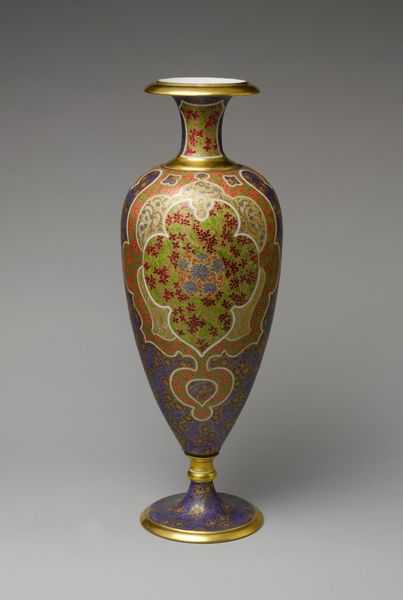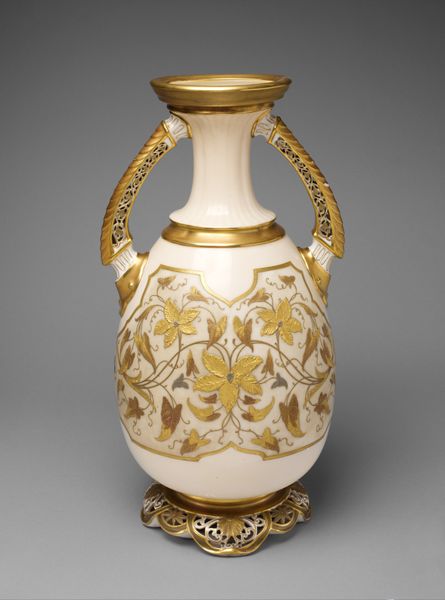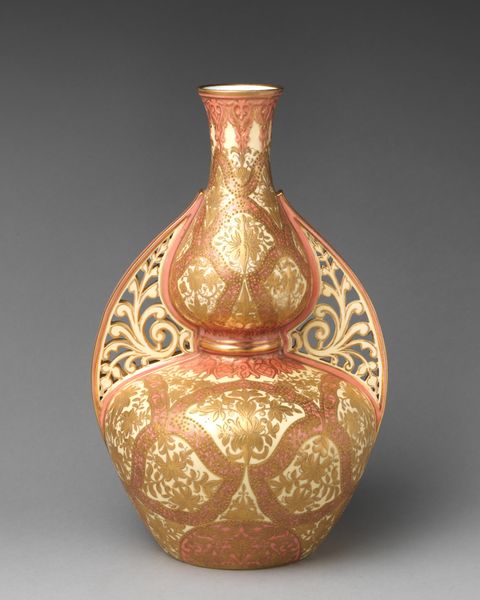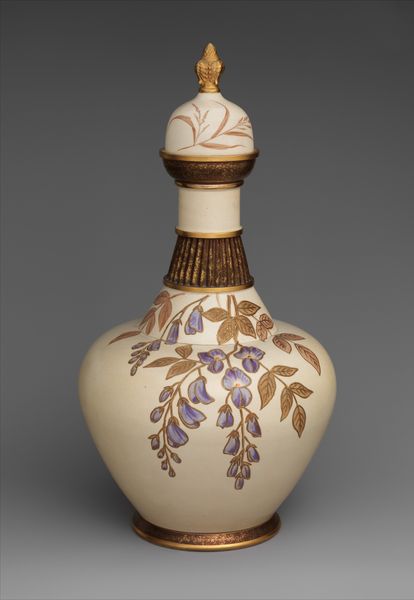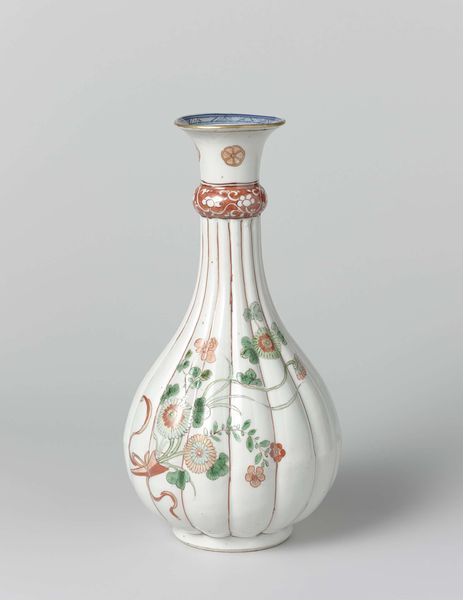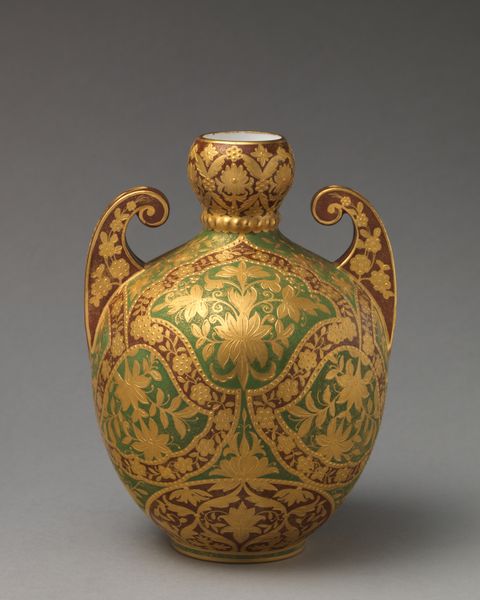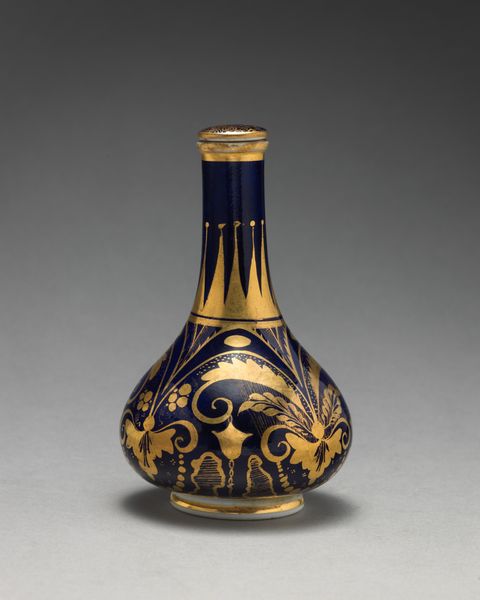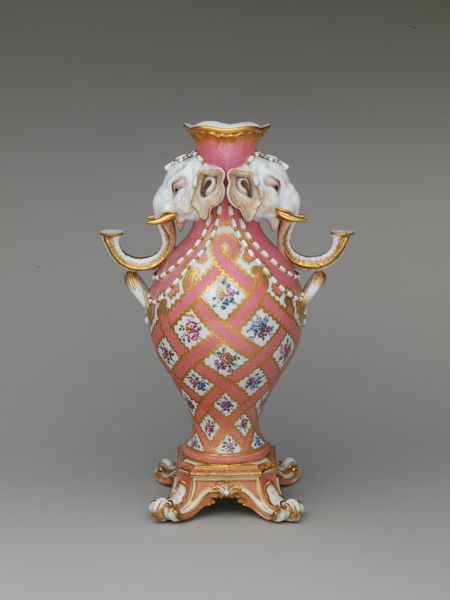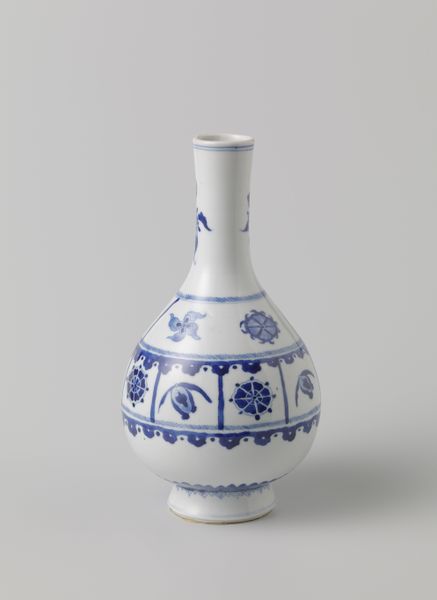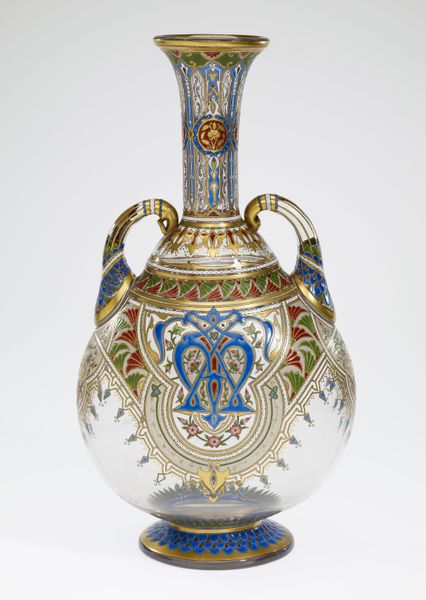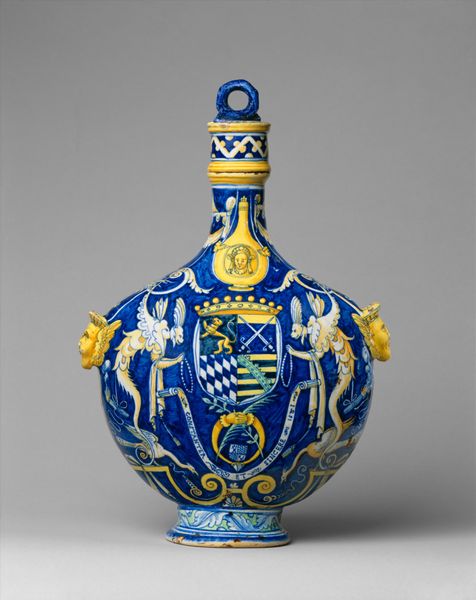
ceramic, porcelain, sculpture
#
ceramic
#
porcelain
#
sculpture
#
decorative-art
Dimensions: Height: 7 5/8 in. (19.4 cm)
Copyright: Public Domain
Editor: This lovely porcelain bottle, created by Christopher Dresser between 1857 and 1867, is on display at the Metropolitan Museum of Art. Its delicate features, the rich terra cotta color, and ornate white and gold ornamentation make it such an interesting work of decorative art. How should we interpret its visual statement? Curator: This "Bottle" exists at the nexus of art, design, and cultural exchange during a period of intense colonial activity. Considering the piece in relation to Dresser's travels, especially his focus on Japanese art, how might the piece represent appropriation or meaningful dialogue? Editor: I see the Japanese influence in its elegance. But could its ornamentation be seen as taking from a culture without really understanding it? Curator: Precisely. The Victorian era saw a surge of interest in non-Western aesthetics, which often meant extracting motifs divorced from their original significance. So, consider not just its beauty, but also how its creation perpetuates or challenges dominant power dynamics. In what ways do you think this object is a representation of 19th-century cultural attitudes? Editor: Maybe it embodies a colonial gaze, transforming cultural artifacts into mere decorative objects, devoid of deeper cultural meaning. It makes me think about labor conditions and the trade routes necessary to produce the piece as well. Curator: Excellent point. By looking at material conditions and the colonial project, we understand the politics embedded in the seemingly harmless "Bottle." Art never exists in a vacuum, but instead reflects the intricacies of historical context, cultural exchange, and power relations. Editor: I see now how we can read decorative art objects like this one critically. Thanks!
Comments
No comments
Be the first to comment and join the conversation on the ultimate creative platform.
